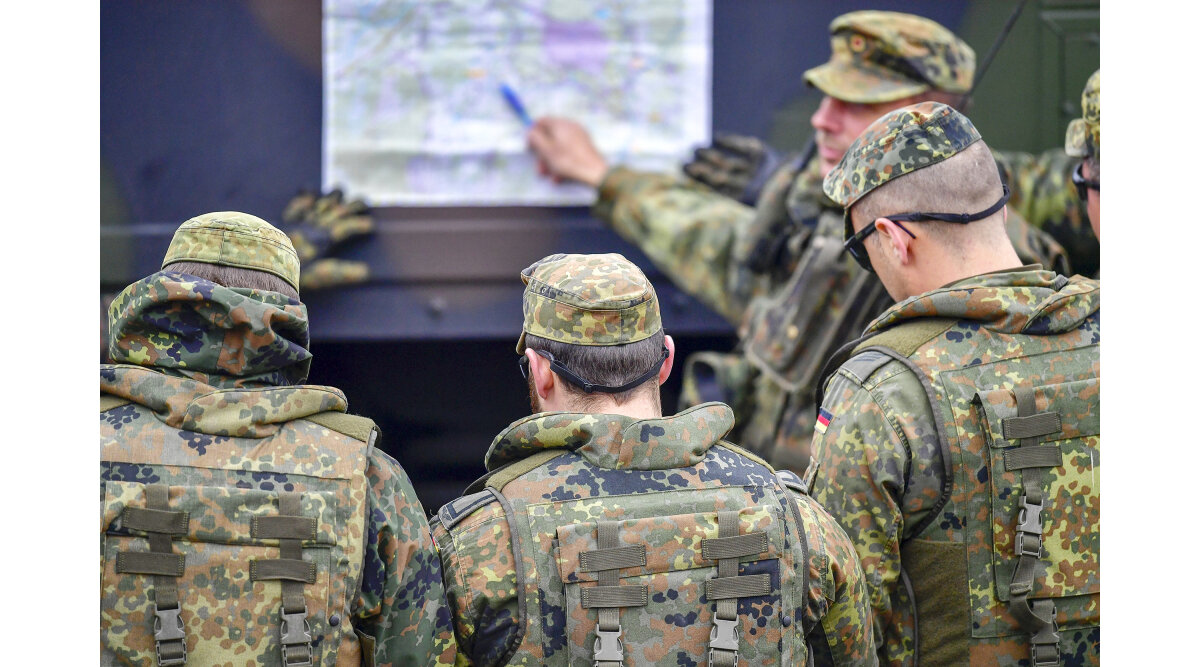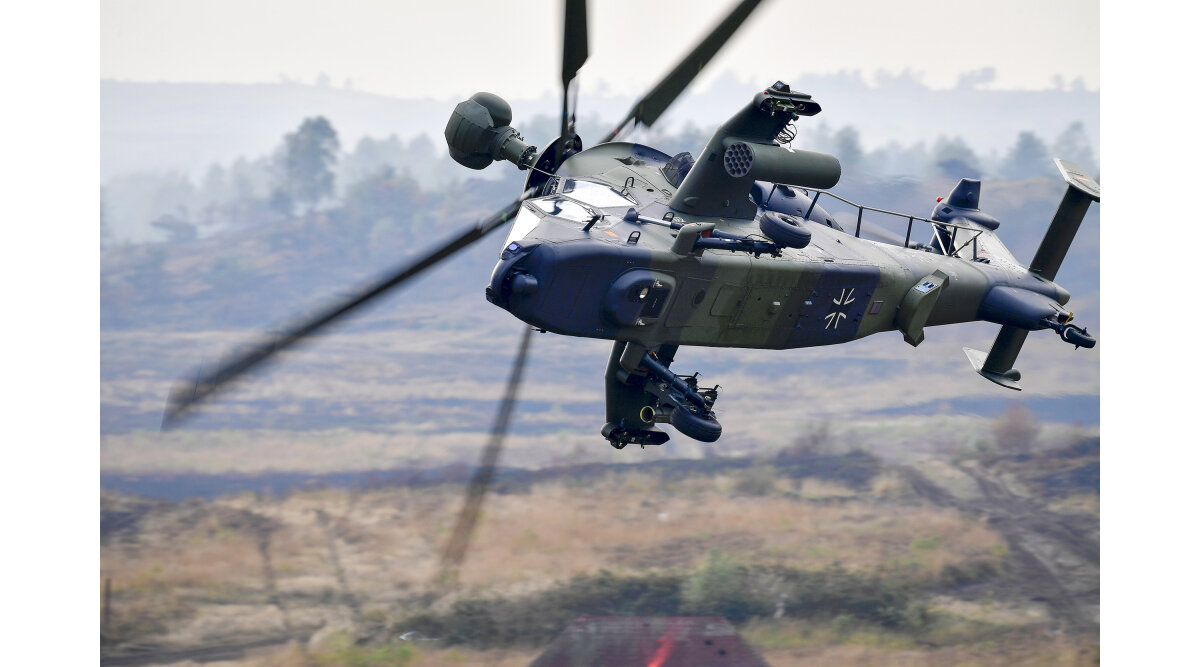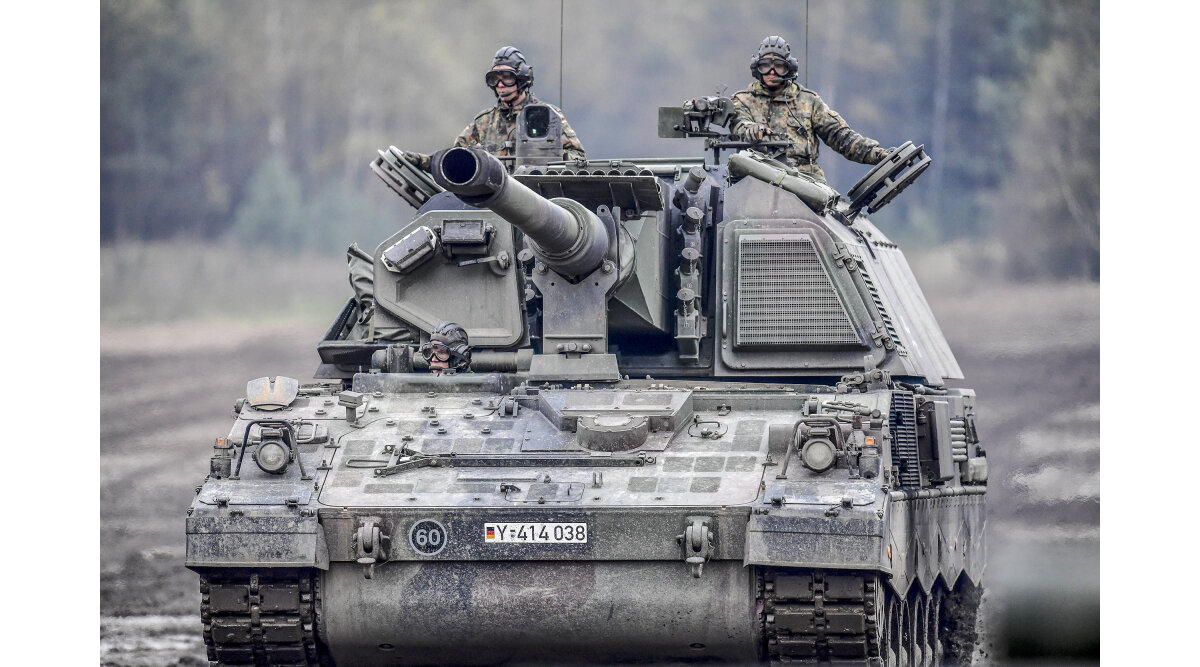Europe’s ‘Underground’ Army
One nation is working “behind the scenes” to bring European armies together. It is swallowing entire armies, and bringing foreign soldiers under its control, without firing a shot.
And this is rarely reported in Western media.
This nation is quietly building a massive new military power in Europe.
France is the nation that talks the most about a European military. But it is another nation doing the real work: Germany.
This is not the first time Germany has quietly built a military behind the scenes. A brief study of history gives a powerful warning about what is happening underground in Europe.
Training for an EU Army
The most recent report on these overlooked efforts comes from Spiegel Online. “It will be years before Europe becomes a true defense union, but [German Defense Minister Ursula] von der Leyen does not want to wait for that to happen,” it wrote.
“For a long time, the cdu politician has been working on the Euro army and pushing forward the networking of Bundeswehr troops with their European partners—beyond large armaments projects or command structures, so to speak, at the base” (Dec. 27, 2017; Trumpet translation throughout).
The Bundeswehr, Germany’s armed forces, currently has 24 training facilities that are open to soldiers from other European Union member states, Spiegel Online reported. It also has German troops in 55 training facilities of other armies across Europe, from Albania to Spain.

Defense Minister von der Leyen is working “behind the scenes” to bring European armies together. She is creating a network of training facilities across the Continent where officers and soldiers learn to operate within the military organization of their European neighbors, Spiegel Online reported.
For example, some Bundeswehr officers are attending the elite officers’ school in Saint-Cyr, France—learning about the military structure, strategies, resources and mentality of France.
In addition to learning to command foreign soldiers, the German officers learn to work with them. They cooperate with the French on flying helicopters. German submarines could soon set off for patrol carrying joint German-Norwegian crews.
And these are just a few of the many ways Germany is building an EU military.
Building an EU Army
Germany is also bringing soldiers from neighboring nations under its command. Two thirds of land forces personnel in the Netherlands—the great majority of the country’s armed forces—will soon be under German authority. These soldiers serve in German brigades under a German command structure. They are becoming part of the German Army. The Czech Republic is integrating one of its two combat brigades into the German Army, and Romania is signing over a mechanized brigade to Germany. These are far from token forces: A brigade typically includes several thousand soldiers.
Germany has been clear about the ultimate aim of this agreement: to create a European army. In 2013, then defense minister Thomas de Maizière outlined the plan at the Munich Security Conference; he said Germany was fed up with talking about a European army. “It is not new visions we Europeans need, but a strategy of resolute pragmatism,” he said. The Germans would let the rest of Europe talk about grand plans for an EU army, while they rolled up their sleeves and got on with the job, one nation at a time.
In 2016, von der Leyen said she aimed to use this method to create “a multinational Panzer division.” No other nation in Europe is doing anything remotely similar. Writing about this project in 2016, Die Welt explained, “This should create a unit with up to 20,000 active soldiers, which should be operational by 2021—which would be the nucleus of a European army” (emphasis added throughout).
Many commentators talk about a European army being years away. But in several significant ways, the army is already here: It’s called the Bundeswehr.
Details of a European Army
On Dec. 11, 2017, EU nations officially launched a military pact called Permanent Structured Cooperation (pesco) that includes logistics, transportation and training missions that will help member countries operate in better coordination with one another.
pesco pushes EU nations to boost their defense spending, provides a way to work together on weaponry, and helps them integrate their forces.
Germany will take the lead on some crucial projects, including the Network of Logistic Hubs in Europe and Support to Operations, a project that adds to the European Air Transport Command to help move European forces across borders more easily, a European Medical Command to help nations work together in rescuing and aiding the wounded, and another project for training military trainers.
These projects, particularly logistics, are essential for maximizing the concentration of forces in the battlefield in the right place at the right time. How does a multinational force move quickly to the battleground? Does each nation rely on its own transports, or can they pool transports to get there quicker? What about evacuating the wounded—every country for themselves, or is there a more efficient system? These are the kind of questions the great generals of the past put hours of painstaking research into. These are details Europe must resolve to create an effective joint military. And resolving them they are.

Why Germany?
Why is Germany taking the lead in creating a European military?
Germany has a history of quietly building its army in peacetime.
After World War i, the Treaty of Versailles limited the size of German armed forces. Though it was years—close to the start of World War ii—before Germany broke the treaty publicly, in actuality it began quietly violating it almost immediately.
On April 16, 1922, Germany and Russia signed the Treaty of Rapallo. On the face of it, the treaty was a fairly standard diplomatic rapprochement between two former enemies. But it contained a secret clause. Germany would carry out military research, development and training—which had been outlawed by Versailles—in Russia. In exchange, Russia would share in the military advances and train with the German Army.
Germany built arms development factories and officer training facilities in Russia. The arrangement allowed Germany to maintain “a continuity of skills which, when the time was ripe, could once more be openly exploited back at home,” writes historian Paul Johnson (Modern Times).
The Manchester Guardian covered some of the details, and Germany’s Social Democrats publicized certain parts of the treaty. But apart from that, it remained secret. “Thus a strange, covert alliance was formed, which occasionally broke surface,” writes Johnson.
Meanwhile, Germany’s police were trained and organized so they could quickly transform into a military reserve force. Versailles limited Germany to a 100,000-strong army. Berlin took full advantage by turning it into an army of officers. The nation was limited to 4,000 commissioned officers, but no limit was placed on non-commissioned officers (ncos). As early as 1922, nearly half the army was comprised of ncos. By 1926, privates were in the minority—making up a little over a third of the army. Versailles also forbade Germany from having an air force. In addition to training pilots at the Lipetsk Air Base in Russia, Germany trained pilots in civilian glider clubs.
Starting around 1927, the German Army began making concrete plans for rapid expansion and getting ready the infrastructure necessary to support a modern, mechanized military. In 1933, Germany announced plans to expand its army to 300,000 soldiers. Just six years later, it was almost 10 times that size.
This is merely one of the most recent examples. To Italian journalist Luigi Barzini Jr., this sudden eruption from nowhere of German military strength was such a common occurrence in history that he believed it formed part of the character of the Germans. He wrote of “transformations” with the nation “hibernating at times.” For example, Napoleon repeatedly beat German states easily. At the time, many wrote the Germans off as militarily useless. “Then as you turned a few pages in the history book, the Germans suddenly appeared completely transformed,” Barzini wrote (The Europeans). “They crossed the border of France as a gray tide of faceless, disciplined soldiers with spiked helmets, a relentless unstoppable war machine. Where had they come from? Only a few Germans and no foreigner had suspected what the imminent metamorphosis would be like.”
Is Germany planning to do the same thing again?

Planning to Go Underground
“From the very start of World War ii, [Germans] have considered the possibility of losing this second round, as they did the first—and they have carefully, methodically planned, in such eventuality the third round …,” Herbert W. Armstrong told listeners to his radio program on May 9, 1945.
In 1996, the United States declassified a document written in 1944, proving Mr. Armstrong right. It was a report of a meeting attended by the leaders of Germany’s elite industries. These firms had been told to “prepare themselves to finance the Nazi Party which would be forced to go underground.”
There are other examples. Maj. Gen. Reinhard Gehlen commanded the Wehrmacht’s Foreign Armies East military-intelligence unit from 1942 to 1945. Gehlen hid his group’s best intelligence in water-tight containers in the Alps. After the war, he swapped his treasure trove of intel for freedom for himself and his staff.
America, as part of its postwar effort to oppose Russia, then paid Gehlen to essentially resurrect his old organization, using many of his old command staff, toward the end of 1946. Within 10 years, Gehlen had rebuilt his old intelligence unit and staffed it with ex-Nazis. By this time his unit was the bnd—the official secret service of West Germany.
Initially after the war, the German government was not allowed its own army. So it turned a blind eye as ex-Nazis built their own. According to German intelligence reports published by Der Spiegel in 2014, a force of 40,000 men with 2,000 officers had been set up and was ready to go in case of war by the end of the 1950s. The defense minister at the time, Franz Josef Strauss, probably knew all about it, according to Spiegel Online. The intelligence documents indicate the project was supported by Hans Speidel, who went on to become the nato supreme commander of the Allied Army in Central Europe, and Adolf Heusinger, who would become the first inspector general of the Bundeswehr. Gehlen was given the task of keeping tabs on this underground army by Germany’s first chancellor, Konrad Adenauer.
These are just a few of the known attempts to set up underground military groups. But these groups were not ideal and Germany soon tried to establish something more official.
The German government has had a clear vision of remilitarizing Europe since 1950. According to the Konrad Adenauer Foundation, Adenauer gathered multiple military experts who had previously served as top-ranking officers under Hitler. At Himmerod Abbey, they discussed the principles of German rearmament as well as the nature and structure of future German forces.
It was in these meetings that the idea of a common European army was formed. Instead of conquering neighboring countries in open warfare as it had attempted to do in two world wars, Germany would ultimately integrate them diplomatically under its own command. A first attempt in May 1952 at developing a common army was rejected by the French legislature in August 1954, but the idea survived. Leading officers went on to take important offices in the new German military and in nato.
Few people were paying attention to these developments, but one voice was sounding a strong warning about them. Mr. Armstrong foretold at the end of World War ii that Germany would rise again to gain dominance over Europe and its armies. The day after the war ended in Europe, he gave a public address forecasting that Germany would be back. That nation, he said, would lead a “coming United States of Europe” (op cit).
How could a crushed Germany possibly achieve this? By “winning the battle of the peace,” he said. The Germans would go “underground” and establish dominance over Europe in peacetime.
This was well before even the early stages of the European Union. In fact, World War ii was not yet over: The Allies were still fighting Japan in the East. Yet Mr. Armstrong was already forecasting a “United States of Europe.”
Modern history shows that Germany went on to create exactly that.
How did he know, just one day after the Allies defeated Germany, that this crushed nation would rise again? Because the Bible contains prophetic language that perfectly describes what is happening in Germany in 2018.

Rising From ‘Underground’
Revelation 17:8 describes a beast, symbolic of a major world power, that “was, and is not.” This beast exists, then vanishes—only to then “ascend out of the bottomless pit.” You could say it comes out of nowhere—from “underground.”
Here is how Trumpet editor in chief Gerald Flurry explains this prophecy in his booklet Prophesy Again:
“During World War ii, we saw the Hitler-Mussolini axis, but then it disappeared from the scene. It ‘was not’! And yet, God says, ‘it is’! The Axis powers lost the war, but as Mr. Armstrong preached time and again, they just went underground—into ‘the bottomless pit’ (verse 8). They’re still there—they’re just underground. God says, after that happens, they are going to ascend right back up!”
But this was not a one-off. Verse 10 states that this power will be ruled by seven successive kings. It rises to power, declines, goes underground, only to reemerge later. Revelation 17 also describes these kings as seven mountains with valleys in between (verse 9). They are not seven continuous kings. There are gaps—during which this power goes underground.
Compare the Bible’s language to quotes used in this article from historians and other experts. Germany’s rearmament deals with Russia “occasionally broke the surface.” The nation is “hibernating at times.” These are similar metaphors to the ones used in your Bible.
Mr. Flurry explains that this power began emerging from the underground in the early 1990s. But to this day it remains partially subterranean.
Now, however, this army is almost ready to burst onto the scene. “When you understand Revelation 17:8 and what is happening [in Europe], you have to say, That’s it! The beast is rising up right before our eyes!” Mr. Flurry writes.
Looking at these behind-the-scenes efforts Germany is making to build a European army, these statements from Mr. Armstrong and Mr. Flurry leap into focus! As Mr. Flurry writes: “The Bible really comes alive when we know specifically what is happening.”
But there is much more to this story than the rise of Germany. Revelation 17 says that this European power will ultimately lose its final battle. It will be overcome by Jesus Christ Himself (verse 14). And the world can thank God for that! His return will mark the merciful end of the most violent, brutal holocaust the world has ever experienced!
The defeat will mean the final end of this power—no more going underground. This will be a liberation for the whole world—including the Germans, who will never have to suffer under this tyrannical power again.
This is the hope you can get only from the Bible. The power that is about to emerge into full view is soon going to disappear forever—to be replaced by the first truly good rule in the history of the world: that of Jesus Christ.
The Bible has proved to be stunningly accurate in forecasting power thus far. Its description perfectly characterizes the “underground” nature of this power in Europe. And it will prove just as accurate in forecasting the hope that follows.
Germany is getting ready to emerge from this bottomless pit. But the good news is, this also means that Jesus Christ is getting ready to return!
